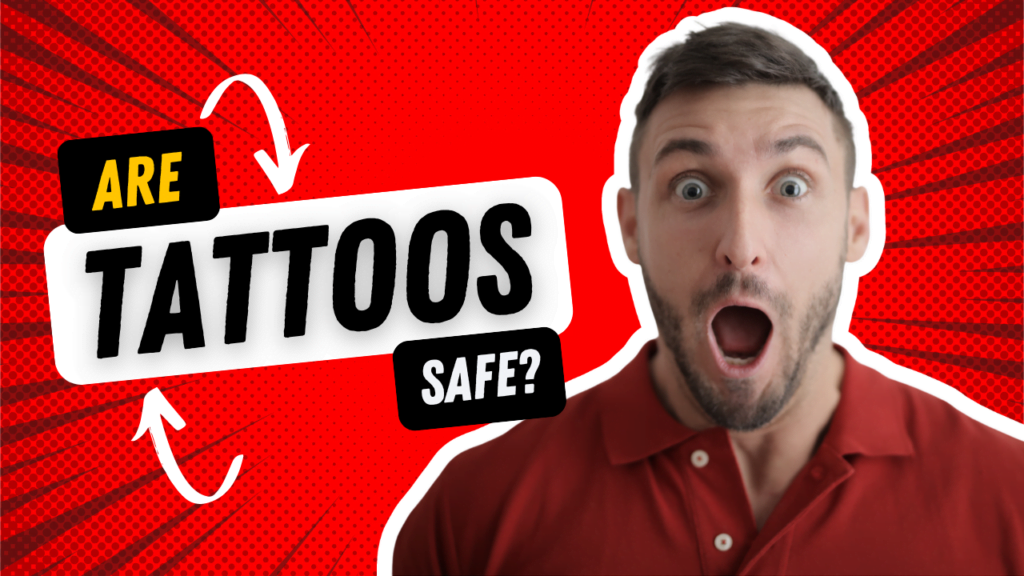Tattoos have adorned human skin for millennia, transforming into a global phenomenon that blurs the lines between art, identity, and rebellion. As the tattoo industry flourishes, concerns about safety and potential risks have emerged. In this comprehensive exploration, we delve into the world of tattoos, examining the potential dangers, safety precautions, and the realities behind the ink.
The Allure of Ink
Tattoos hold a magnetic appeal, captivating individuals with their ability to express individuality, commemorate milestones, or simply adorn the body with aesthetic beauty. The intricate designs, vibrant colors, and permanent nature of tattoos contribute to their allure. However, beneath the surface of this artistic expression lies a realm of potential hazards that demand careful consideration.
Understanding the Tattoo Process
To grasp the potential risks associated with tattoos, it is essential to understand the mechanics of the tattooing process. A tattoo artist employs a sterile tattoo machine equipped with needles to deposit ink into the dermis layer of the skin. The depth of the needle penetration and the amount of ink injected vary depending on the desired tattoo design and the artist’s technique.
Potential Risks and Complications
While tattooing is generally considered safe when performed by a qualified professional in a hygienic environment, potential risks and complications cannot be entirely dismissed.
- Infection: The most common risk associated with tattoos is infection. When proper sterilization procedures are not followed, bacteria, viruses, or other pathogens can enter the bloodstream through the open wounds created by the tattoo needles. Symptoms of infection include redness, swelling, pain, pus, and fever. In severe cases, infection can lead to blood poisoning or other systemic illnesses.
- Allergic Reactions: Some individuals may experience allergic reactions to tattoo ink or other substances used during the tattooing process. Allergic reactions can manifest as skin rashes, itching, swelling, or difficulty breathing. In rare instances, severe allergic reactions can be life-threatening.
- Skin Irritation and Inflammation: Tattooing is essentially a controlled injury to the skin, and as with any wound, it can cause irritation and inflammation. Mild discomfort, redness, and swelling are common in the days following a tattoo. However, persistent or severe inflammation may indicate an underlying issue.
- Tattoo Removal Complications: While tattoo removal techniques have advanced, they are not without risks. Laser removal can lead to scarring, hypopigmentation, or hyperpigmentation. Additionally, multiple removal sessions may be required, increasing the overall cost and potential for complications.
- Bloodborne Diseases: Although rare, there is a risk of contracting bloodborne diseases such as hepatitis B, hepatitis C, or HIV through contaminated tattoo equipment. Adhering to strict sterilization protocols and using disposable needles significantly reduces this risk.
- MRI Interference: Tattoos containing metallic pigments or particles may interfere with magnetic resonance imaging (MRI) scans. In some cases, the tattoo may cause discomfort or burning during the scan.
Ensuring Tattoo Safety
To minimize the risks associated with tattoos, it is crucial to exercise caution and conduct thorough research before choosing a tattoo artist. Consider the following safety measures:
- Choose a Reputable Artist: Select a tattoo artist with a strong reputation for hygiene and safety. Look for artists who prioritize sterilization, use disposable needles, and maintain a clean and well-ventilated studio.
- Discuss Allergies and Medical Conditions: Inform your tattoo artist about any allergies, skin conditions, or medical conditions that may affect the tattooing process or healing.
- Follow Aftercare Instructions: Adhere to the aftercare instructions provided by your tattoo artist to promote proper healing and reduce the risk of infection.
- Research Ink Ingredients: Inquire about the composition of the tattoo ink used by the artist. Some individuals may have sensitivities to certain ink pigments.
The Evolving Landscape of Tattoo Safety
As the tattoo industry continues to grow, advancements in technology and sterilization techniques have contributed to improved safety standards. Tattoo artists are increasingly adopting stringent protocols to protect the health and well-being of their clients. Additionally, research into tattoo-related complications is ongoing, leading to a better understanding of potential risks and the development of preventive measures.
Conclusion
Tattoos are a form of personal expression that can enhance one’s identity and aesthetic appeal. However, it is essential to approach tattooing with awareness of the potential risks and to prioritize safety throughout the process. By choosing a reputable artist, following aftercare instructions, and understanding the potential complications, individuals can enjoy the beauty of tattoos while minimizing the associated hazards.
Remember, the decision to get a tattoo is a personal one, and it is essential to weigh the potential benefits against the risks before proceeding.
Getting a tattoo is generally safe, but like any medical procedure, there are some risks. The most common complications from tattooing include infection, allergic reactions, and scarring. To reduce your risk of these complications, it’s important to choose a reputable tattoo artist and aftercare of your tattoo properly.
Make sure the tattoo artist follows proper sterilization techniques and that you follow the artist’s aftercare instructions. If you notice any unusual symptoms, such as excessive redness, swelling, or an increase in pain, you should contact your doctor or a healthcare professional right away.


